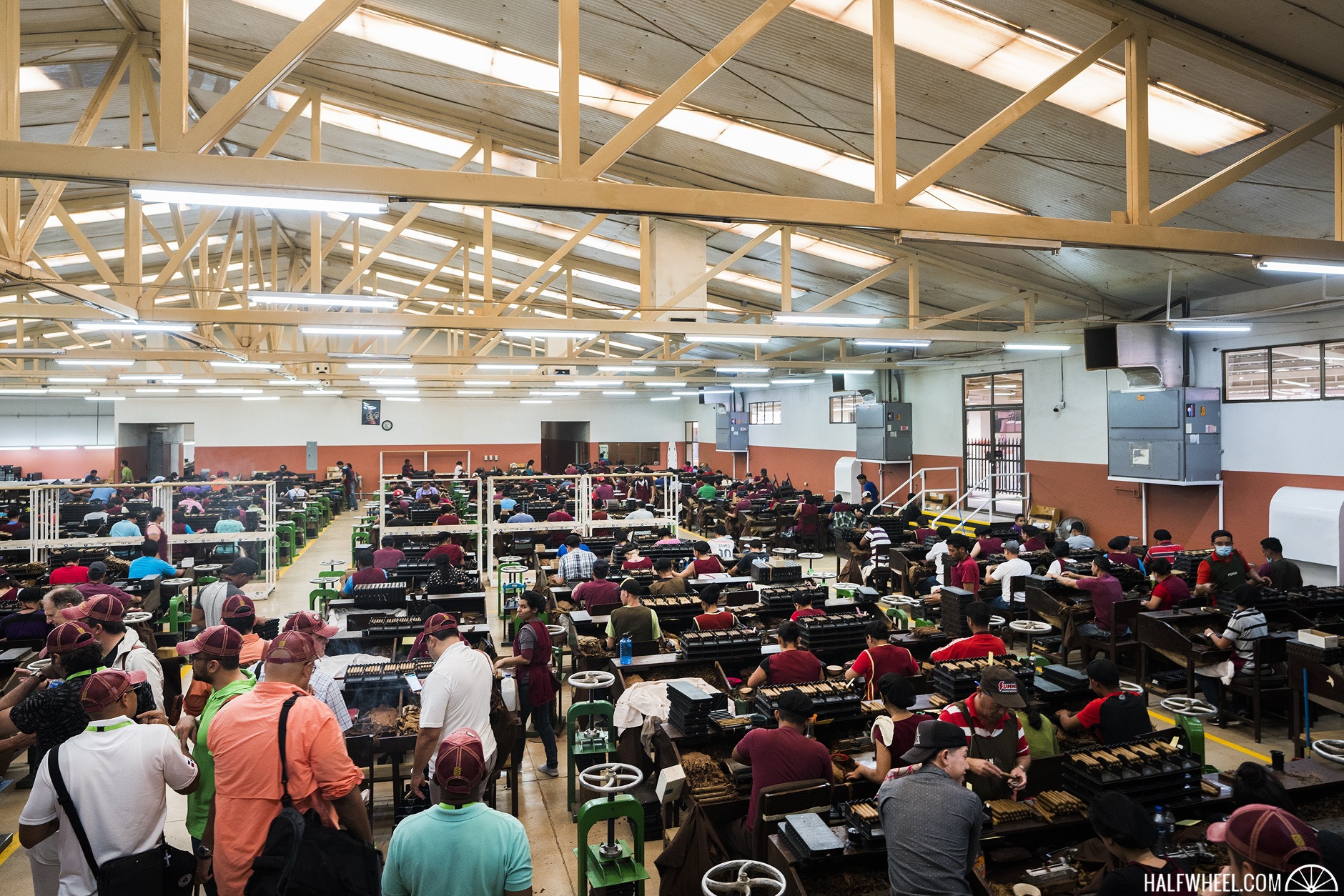At last year’s IPCPR Convention & Trade Show, J.C. Newman showed off a mysterious new cigar called Yagua.
It was in one of the company’s very well lit display cases, so it was challenging to tell how different the cigar was compared to just about everything else on display at a cigar trade show, but it was a bit different. Yagua was created after a conversation with Lazaro Lopez, who manages the J.C. Newman PENSA factory in Estelí, Nicaragua. Lopez was explaining how his grandfather used to make cigars in Cuba, specifically that rather than using cigar molds, his grandfather would roll cigars and then wrap them tightly in royal palm leaf to give them a shape. The end result were cigars that wouldn’t end up as perfect circles.
J.C. Newman decided to see what would happen if it made cigars like that in the 21st century. The end result is a 6 x 54 toro that looks much different than most 6 x 54 toros. It uses a Connecticut broadleaf wrapper over a Nicaraguan binder and Nicaraguan fillers, with J.C. Newman adding that it specifically underferments the wrapper to help give the cigar some edge. 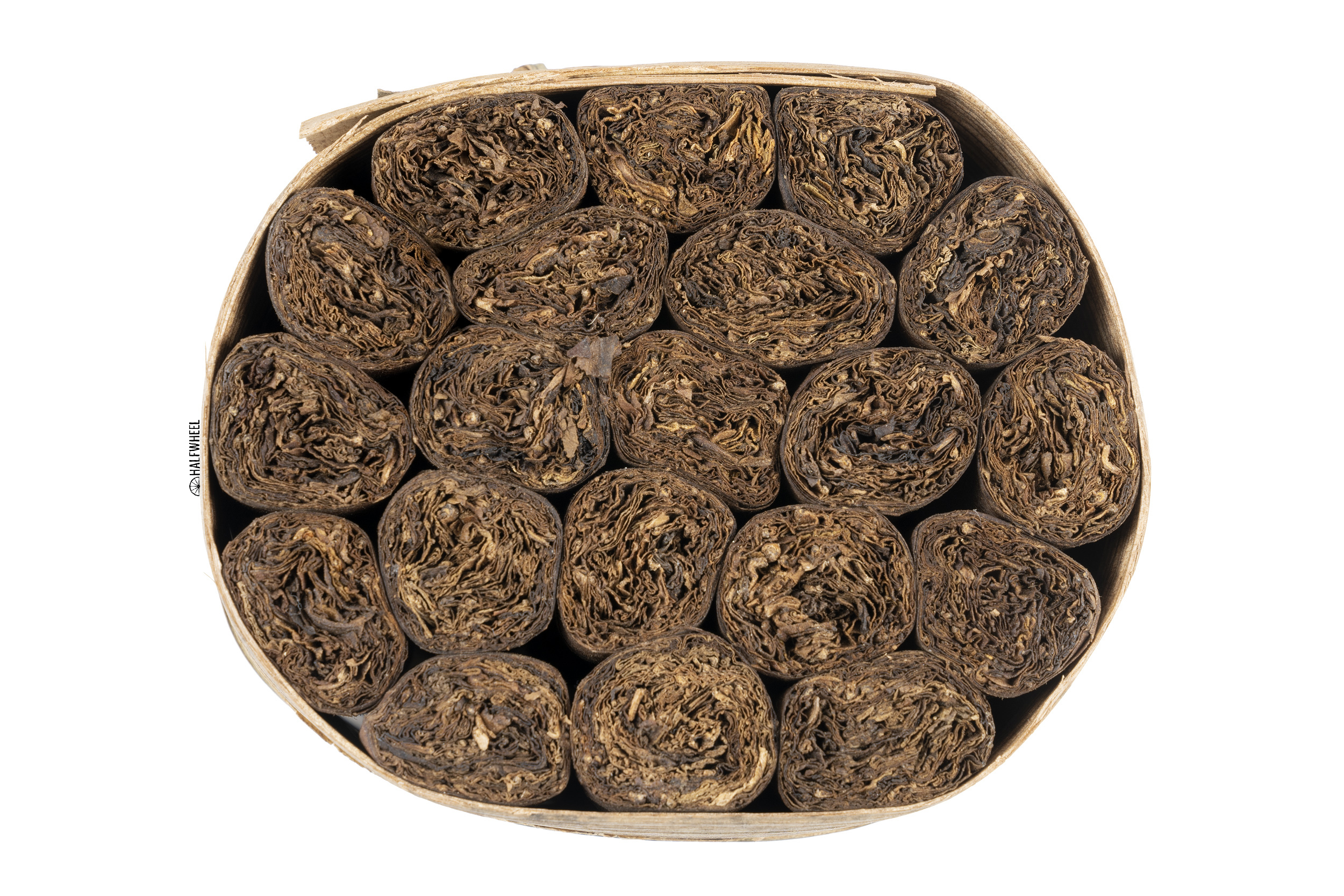
The real difference though is what happens once the cigars are rolled. Rather than being placed in traditional wooden molds to help ensure the cigars get a round shape, 20 Yagua cigars are banded and then tightly wrapped in a royal palm leaf. The cigars are eventually boxed and shipped to stores still tightly packed inside the bundle.

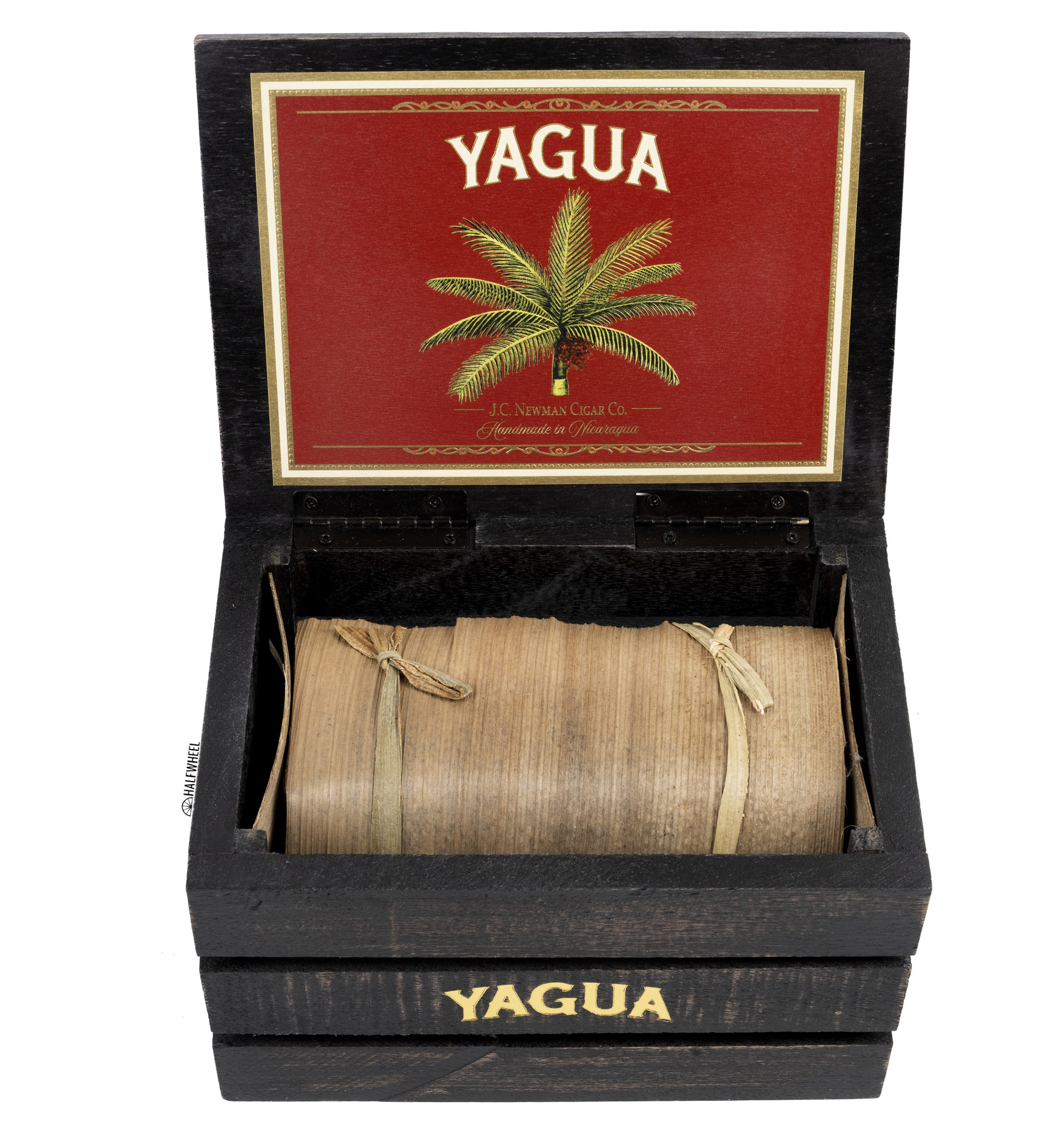
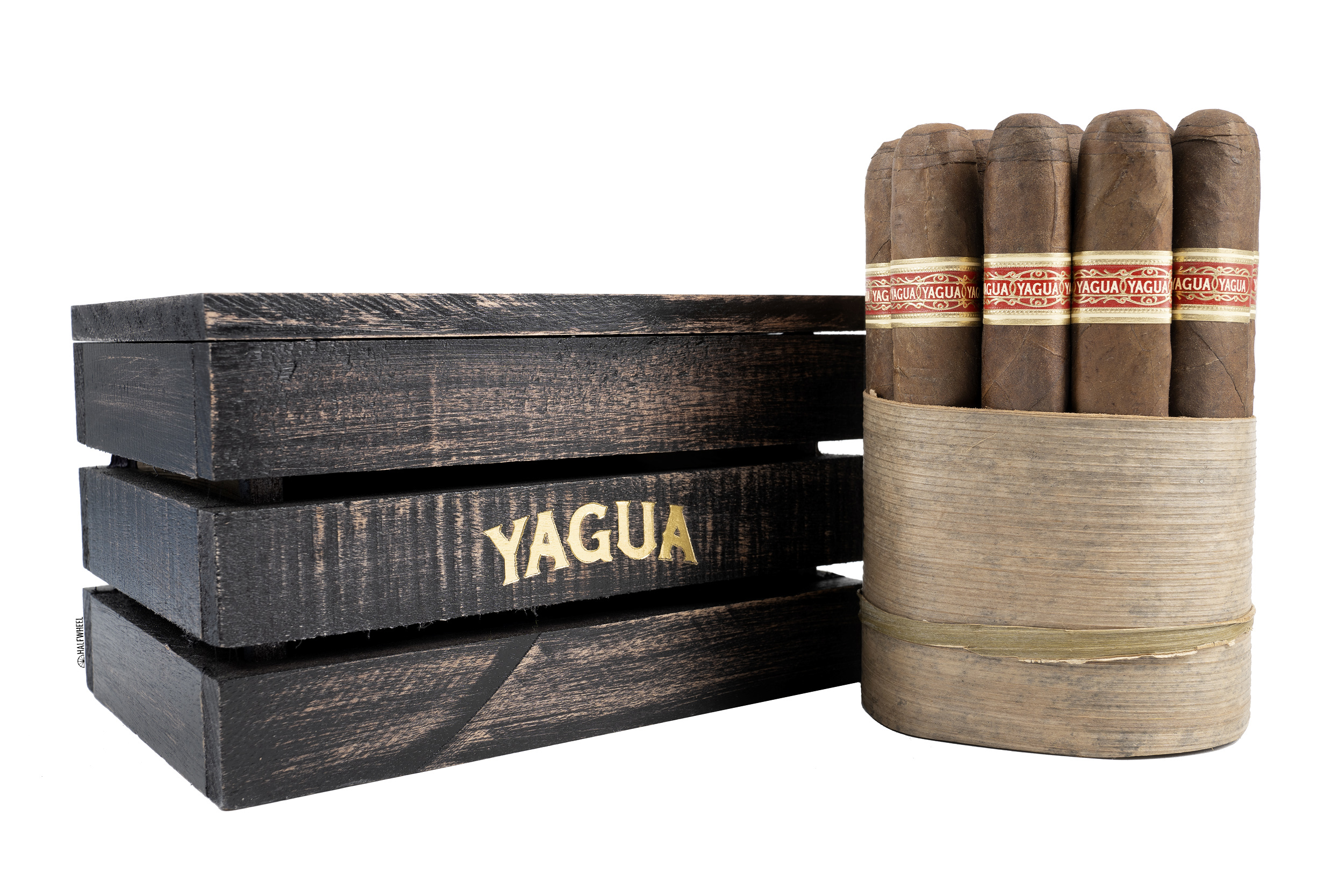
That means when the cigars arrive at stores, the feet of the cigars are usually far from perfect circles. Some are triangular, others are more of an oval, some even end up as pentagons.
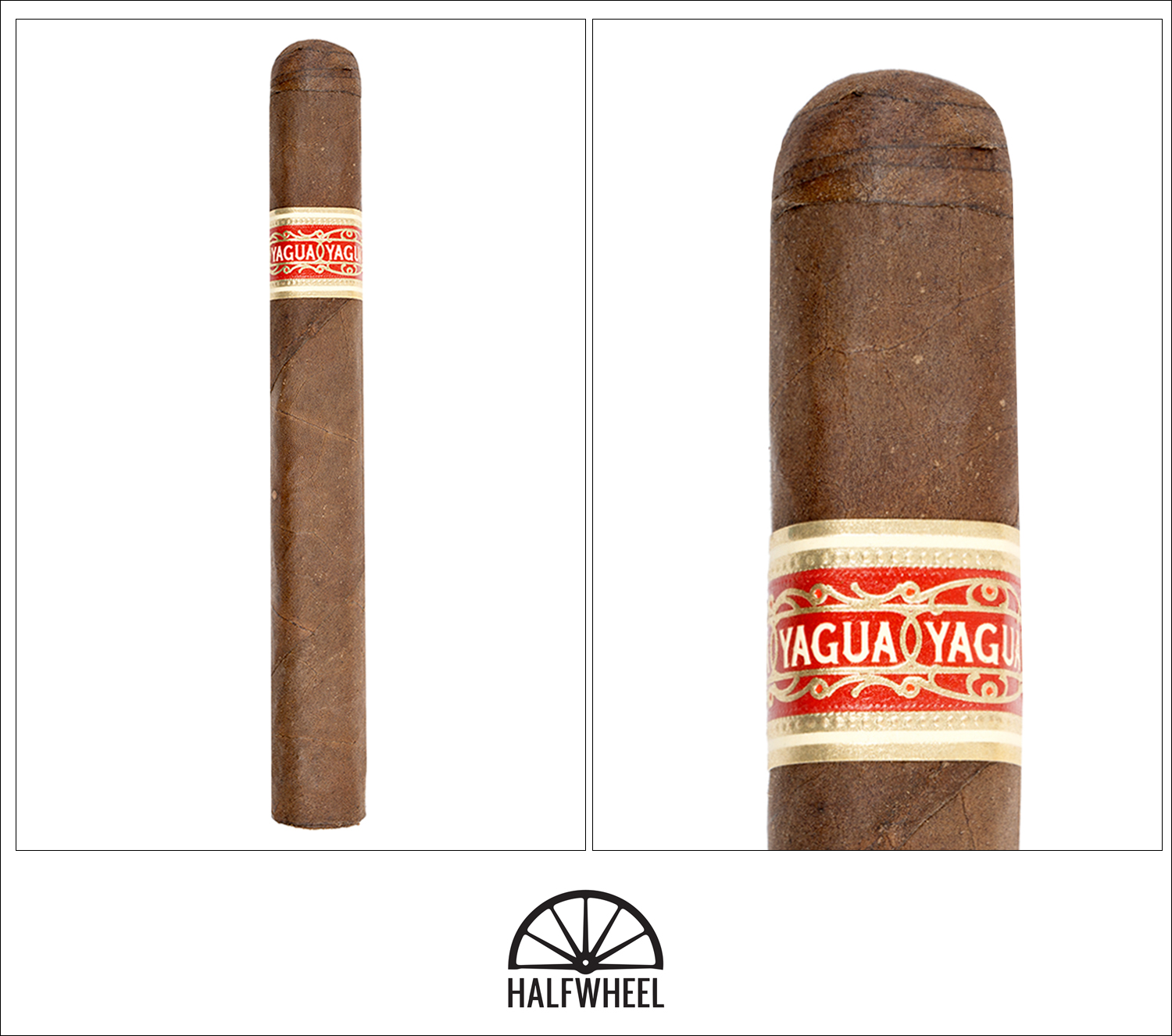
- Cigar Reviewed: Yagua
- Country of Origin: Nicaragua
- Factory: J.C. Newman PENSA
- Wrapper: U.S.A. (Connecticut Broadleaf)
- Binder: Nicaragua
- Filler: Nicaragua
- Length: 6 Inches
- Ring Gauge: 54
- Vitola: Toro
- MSRP: $7.50 (Box of 20, $150)
- Release Date: July 27, 2020
- Number of Cigars Released: Regular Production
- Number of Cigars Smoked For Review: 3
When the Yagua was announced, Drew Newman told me that the cigars would likely reshape themselves to a more normal appearance once they were taken out of the bundle. That doesn’t appear to have happened as the feet of the cigars that I’m smoking for review are still pretty uncommon. There’s certainly some softening out of edges, but it’s still pretty deformed looking after over a month since the bundle was opened. Aroma from the wrapper is mild-medium with barnyard leading leather. There’s some sweetness down there but it’s challenging for me to figure out what exactly it is. The aroma from the foot is one of the more interesting smells I’ve experienced in some time. There’s a very weird meatiness—more poultry than beef—over some of the typical aging room smells of chocolate, cedar and acidity. Unlike, the wrapper, it’s medium-full in intensity. The cold draw is also medium-full with a semi-sweet brownie flavor, the smell of mud, and a bit of blackberry.
The Yagua starts with earthiness, leather, oak, sourdough bread and some roasted flavors, all around medium-full. Toastiness is the dominant flavor on top of cedar, black pepper, coffee and meatiness. It finishes with earthiness followed by a generic pepper, green grapes, more damp earth, and a very long-lasting black pepper. Retrohales have leather, black pepper, roasted corn tortillas and sourdough bread. The finish of the retrohale ends with lots of sourdough bread over white rice, earthiness, pre-ground black pepper and a peaty whisky burn. Flavor is full, body is full and strength is medium-plus. Yagua is not going to win any awards for how pretty the ash forms, but the construction is generally pretty good. One sample is too open and that leads to both a diminished flavor profile and the need for a touch up.
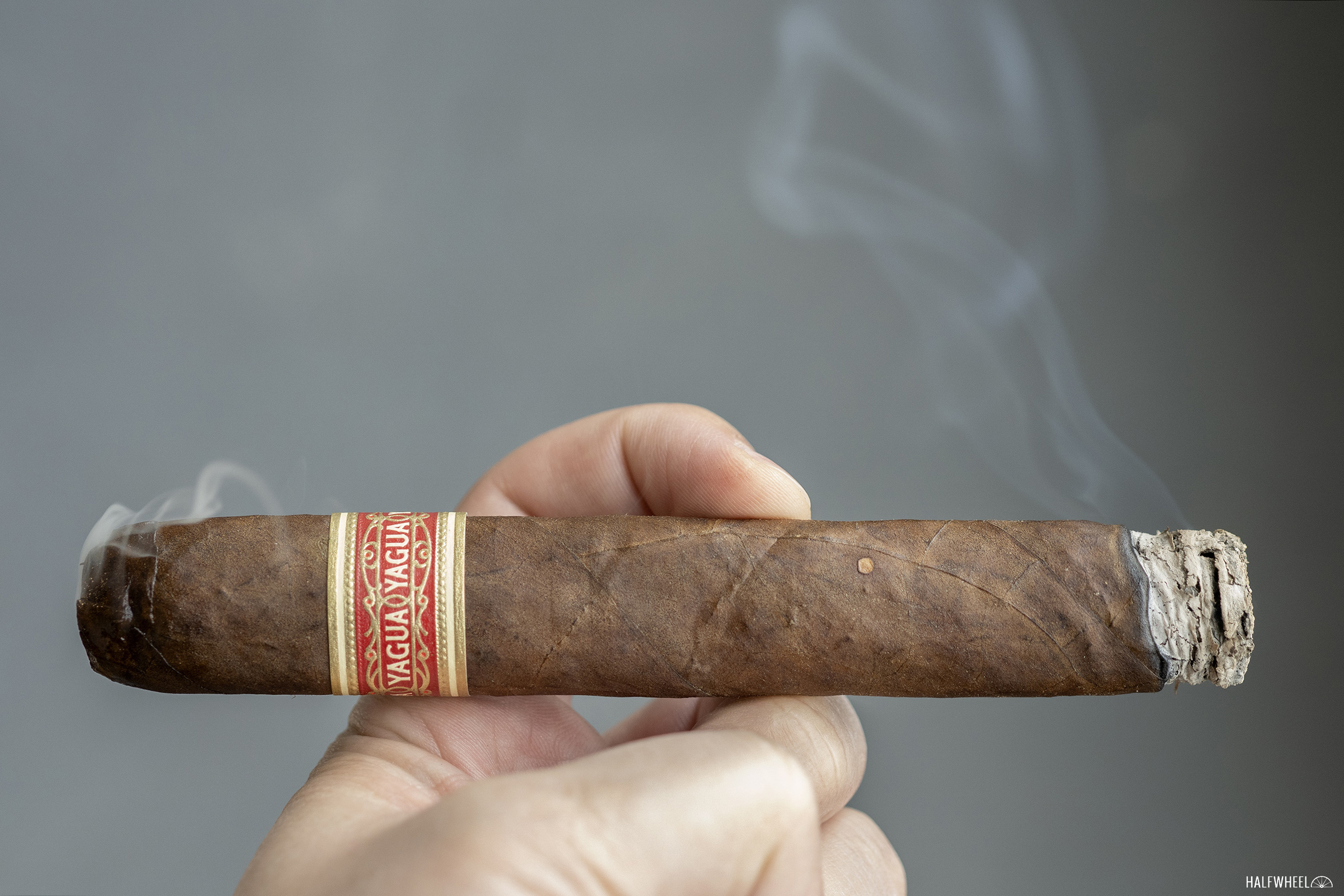
There’s a substantial advancement in the matureness of the flavors in the second third of the Yagua. It’s a much more roasted profile with oatmeal cookies, leather, cedar and a familiar white rice. The finish is led by the white rice before peanuts and black pepper emerge. Retrohales produce blueberry, toastiness and some pita bread. Finishes on the retrohale are led by peanuts before the generic black pepper emerges. Flavor is full, body is full and strength is medium-full. Construction remains the same with two cigars performing excellently and the third cigar struggling due to an open draw.
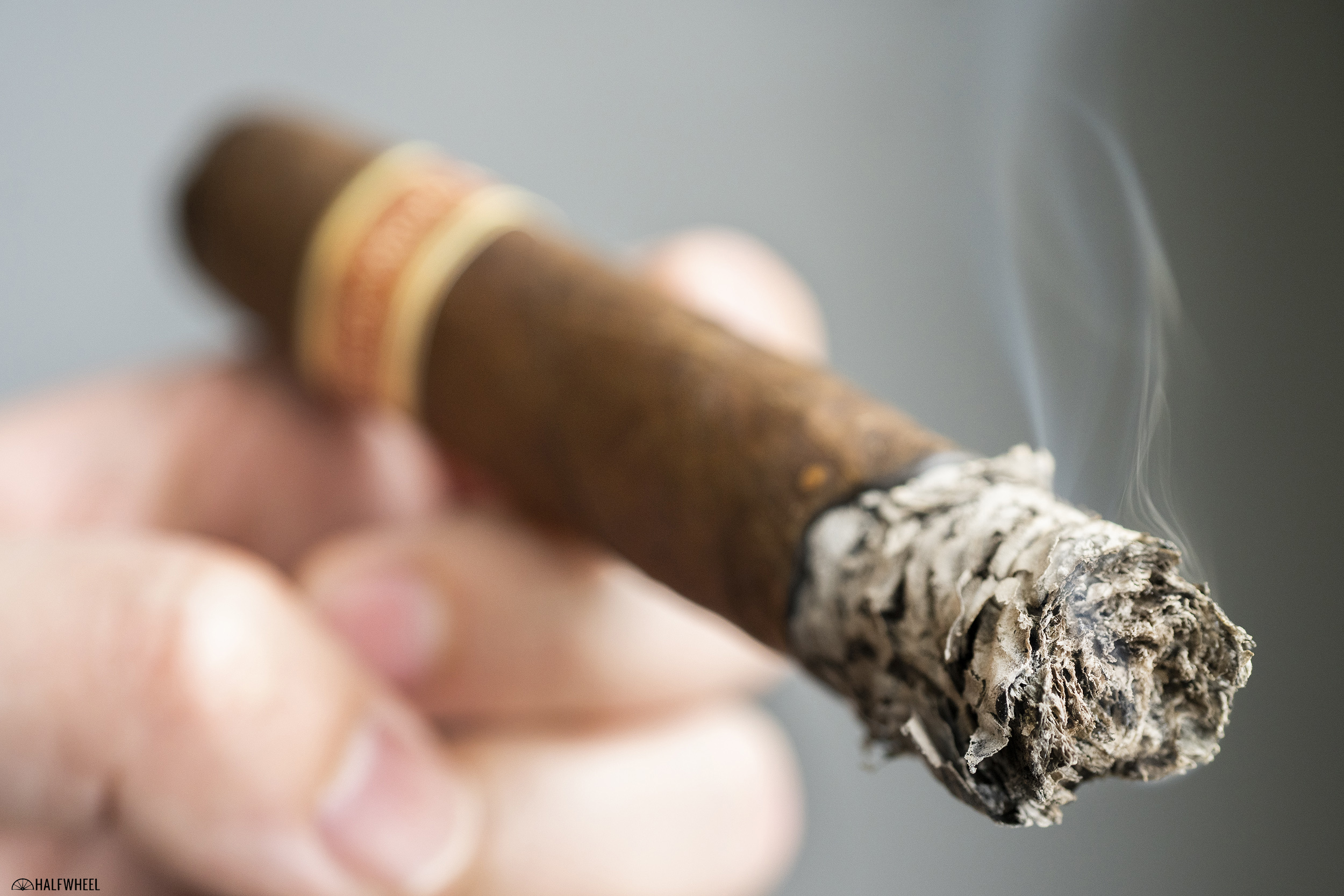
Once again, the Yagua seems to go up a level in terms of how advanced the profile is after a transition. The final third is led by dry pasta, corn tortilla chips and a butterscotch sweetness. The finish has a much different texture thanks to a graininess, but the flavors are a pretty simple mixture of white rice and paprika. Retrohaling produces a generic red wine sensation with leather and white rice. Once again, I find the finish to be dominated by white rice with just some hints of pepper. Flavor is medium-full, body is medium-full and strength is medium-plus to medium-full.

Final Notes
- I really feel like there should be some sort of accent mark in the name.
- The name Yagua is also the name used to refer to the long rods of tobacco that are used to cure andullo tobaccos in the Dominican Republic.
- Five years ago, I never would have guessed that J.C. Newman would be behind two of the most innovative cigars in a calendar year. I’d put Yagua and The American up against any other cigars from other manufacturers in terms of challenging conventions in the modern cigar business.
- While the feet end up not looking like a perfect circle, the caps are actually more pedestrian than you’d think. It’s not a symmetrical circle, but it’s pretty close.
- I’d be curious to know what Yagua tastes like both without the underfermented wrapper and also without the unique pressing.
- J.C. Newman nailed the rustic packaging. The bands in particular are exactly what they should be.
- This is not a cigar that could be smoked blind.
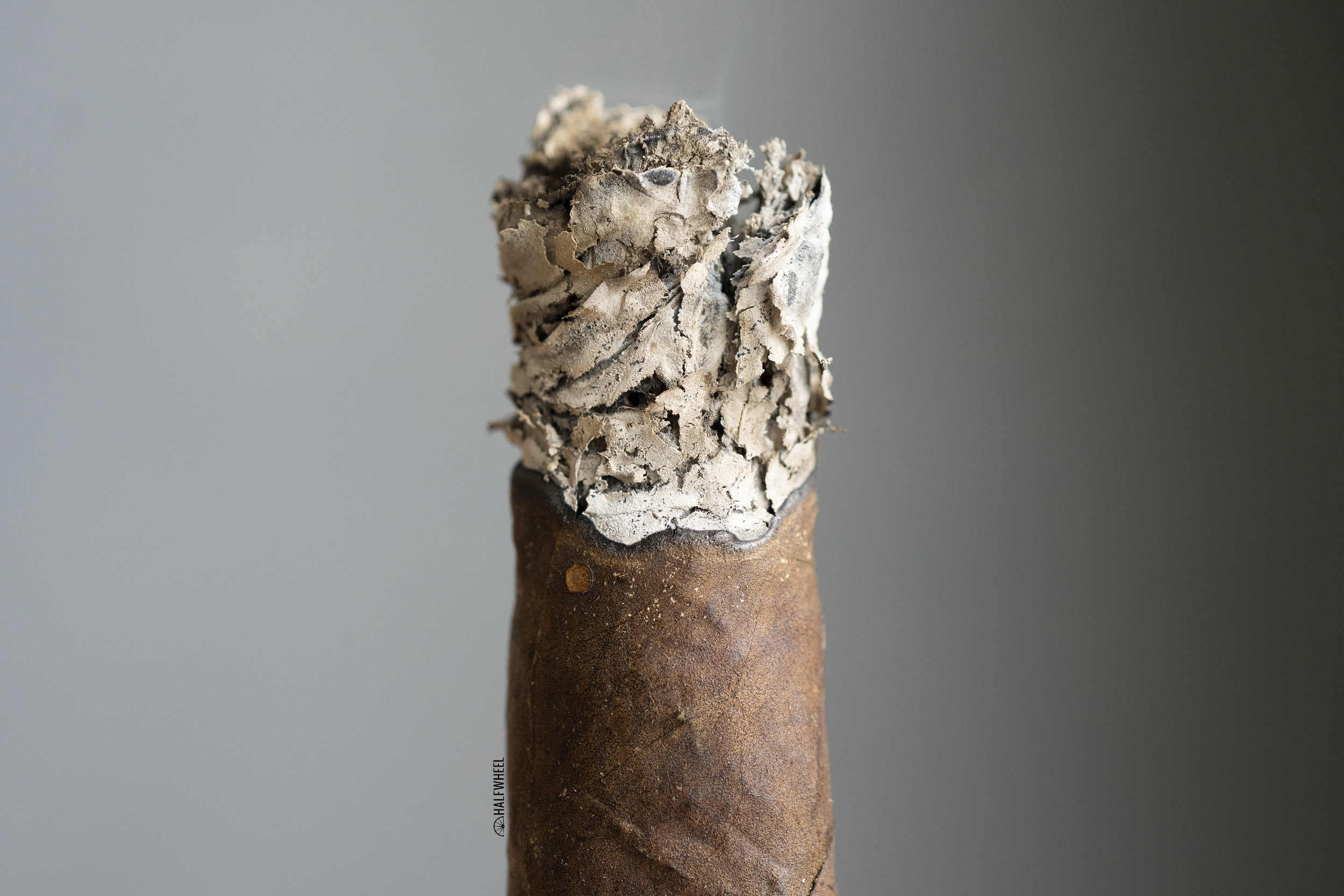
- It’s also not a cigar that’s going to win any awards for the prettiness of its wrapper or of the ash.
- White rice is a flavor I pick up on some cigars, I’m not sure I’ve ever tasted it in as many different segments as I did on the Yagua.
- Despite the underfermented wrapper, the strength wasn’t that intense.
- J.C. Newman advertises on halfwheel.
- Cigars for this review were sent to halfwheel by J.C. Newman.
- The final smoking times ranged from one hour and 45 minutes to two hours and 45 minutes. In general, this will be a two hour and 20 minute cigar for me, but the open draw really made me push things on one sample.
- Site sponsor Atlantic Cigar Co. carries the Yagua.
Yagua might seem like a gimmick and it's remarkably different from the rest of the cigars that J.C. Newman sells, but that's not because it's a gimmick. The company’s Nicaraguan offerings—dominated by the sales of Quorum and Brick House—aren’t in line with the modern Nicaraguan cigar offerings, but Yagua—weird shape and all—is. The draws were a bit all over the place, but at its best, Yagua can be a great medium-full cigar. It has some of the more advanced flavors and balance that I haven't found in many Brick House cigars, and it does all this at a $7.50 price point.

